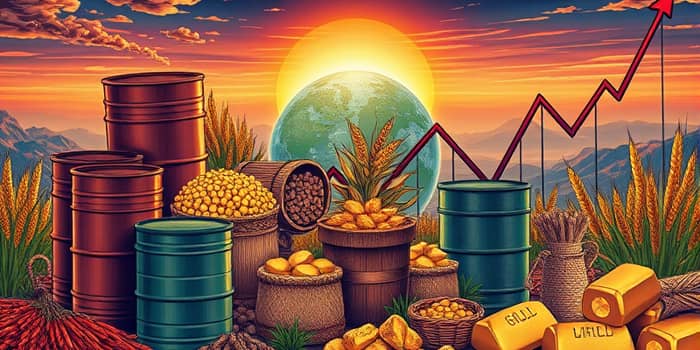
Since the onset of the pandemic in 2020, no sector has felt the tremors of global upheaval more keenly than the commodity markets. From the petrol pump to the grocery aisle, household budgets have borne the brunt of record levels of market volatility. Yet as we peer into the years 2024 to 2026, a complex tapestry of decline, resilience and risk begins to reveal itself.
According to World Bank projections, global commodity prices are projected to decline by 12% in 2025 and another 5% in 2026, marking a return to levels unseen since 2020. While nominal costs remain elevated compared to pre-pandemic norms, inflation-adjusted prices are set to slip below the 2015–2019 average. This downward correction reflects improved supply chains, lower logistical bottlenecks and easing trade tensions.
Yet the past five years have shown that commodity markets can pivot in an instant. After an unexpected 2% rise in the first quarter of 2025, global commodity prices tumbled 6% in April alone. Energy fell 8%, metals declined 7%, and agricultural products dipped 1%. Fertilizers and select precious metals, however, bucked the trend, underscoring persistent vulnerabilities in certain niches.
Each commodity class reveals unique drivers and challenges:
Energy prices are forecast to plunge by 17% in 2025 and a further 6% in 2026, led by ample oil supplies from OPEC+ members and easing post-pandemic demand. Oil prices themselves dropped nearly 10% between August 2024 and March 2025 amid trade tensions and adjustments to supply cuts.
Industrial metals saw a modest 2.5% gain in 2024 but face a pain point ahead. April 2025 data shows a 7% decline across copper, aluminum and nickel, as slowing manufacturing activity in major economies weighs heavily on demand.
Agricultural commodities are set for a gradual slide—down 1% in 2025 and 3% in 2026—as ample harvests offset sporadic weather shocks. Yet a single drought or flood can still send local food prices soaring, with immediate impacts on food security.
Precious metals stand apart. Gold and silver have rallied on geopolitical jitters and inflation hedging, providing a safe haven for investors even as other commodity prices fall.
Raw materials and energy costs are foundational to virtually every economic activity. When oil prices ascend, transportation and manufacturing expenses follow suit, eventually filtering into the final price of consumer goods. In January 2025, the US Consumer Price Index rose 3% year-on-year, with a month-on-month uptick of 0.5%, largely driven by energy and food categories.
For industrial producers, material cost surges can erode profit margins or force price hikes. Such pass-through effects mean that a spike in base metal prices can lift the cost of electronics, construction and automotive goods. In developing economies, where food and fuel constitute a larger share of household budgets, these shifts can intensify social and political pressures.
Looking beyond the next two years, several themes promise to shape commodity markets for the long haul:
These factors highlight why anticipate and mitigate inflationary shocks will remain central to corporate and policy planning in the years ahead.
In this volatile landscape, stakeholders must adopt proactive measures to weather price fluctuations:
Governments can complement these steps by promoting strategic reserves for critical commodities, fostering resource-efficient technologies, and supporting social safety nets for vulnerable populations when prices spike.
Price swings in commodity markets need not be viewed solely as threats; they can catalyze innovation. For instance, sustained high energy costs have accelerated the development of green hydrogen, while metal price volatility drives recycling and circular economy initiatives.
Emerging digital solutions—such as blockchain for supply chain traceability and AI-powered demand forecasting—offer real-time visibility into market movements. By harnessing these tools, companies and governments can embrace sustainable resource management practices that foster both stability and growth.
Ultimately, the interplay between commodity prices and inflation underscores a broader truth: economic resilience springs from adaptability. Stakeholders who cultivate flexibility, invest in innovation and forge collaborative partnerships will be best positioned to thrive.
This moment calls for collective action and creative problem-solving. By embedding sustainability at every stage—from extraction to consumption—we can ensure that the commodity cycles of tomorrow support inclusive prosperity and environmental stewardship.
Let us seize this inflection point to craft a future where commodity markets drive opportunity rather than uncertainty, and where strategic foresight transforms challenges into engines of progress.
References













